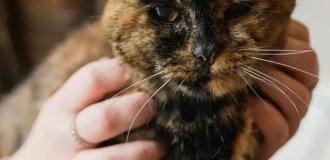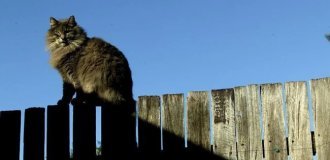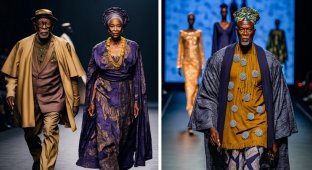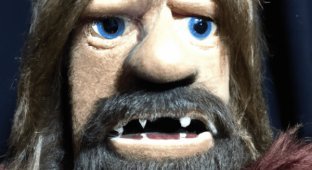Why did the samurai shave their hair off the top of their head? (6 photos)
If you watched movies about samurai, studied Japanese culture or history, you may have noticed that very often samurai were depicted with strange hairstyles, where in the crown and frontal part of their hair shaved off, and the hair from the back of the head was put in a bun - chonmage. 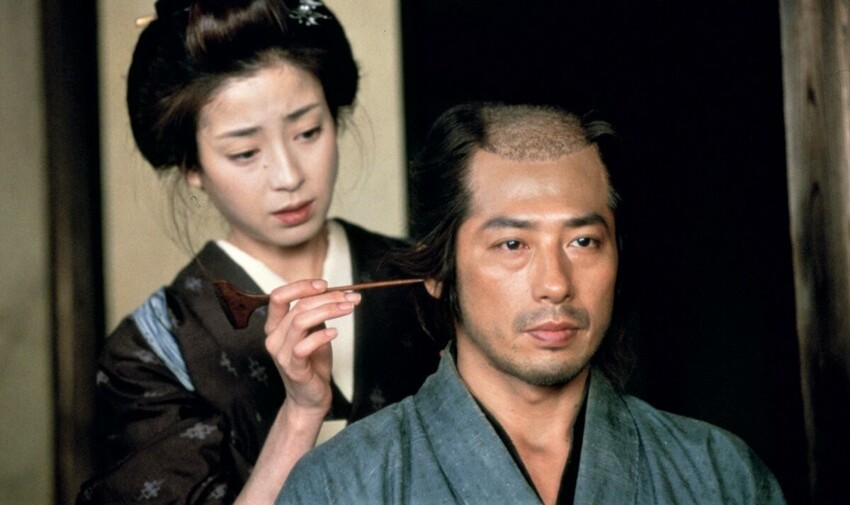
Of course, in the eyes of modern people, such a hairstyle, is undoubtedly quite unusual, so why in Japan at all Was there such a culture of hairstyles?
A small digression into the history of the emergence of fashion for such a fashionable samurai hairstyle 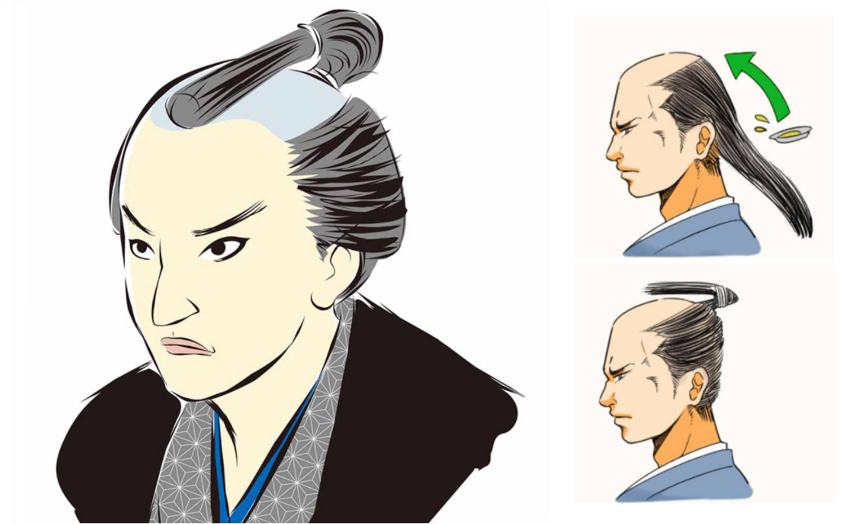
After 1200, during the Kamakura and Muromachi periods, the samurai began to shave off the hair on the crown and forehead, and then the remaining put the hair from the back of the head in a bun. At first people used tweezers, to remove hair from the top of the head, but during the Edo period people started shave them completely with a razor.
The remaining hair was smeared with a fragrant fudge made from chamomile oil and wax and tied into a tail, the end of which tucked into a bun at the back of the head with wax paper string motoyu. Four types were used to tidy up the hair. sukigushi (wooden combs) made by the Shingo Mori family, which made them for centuries. 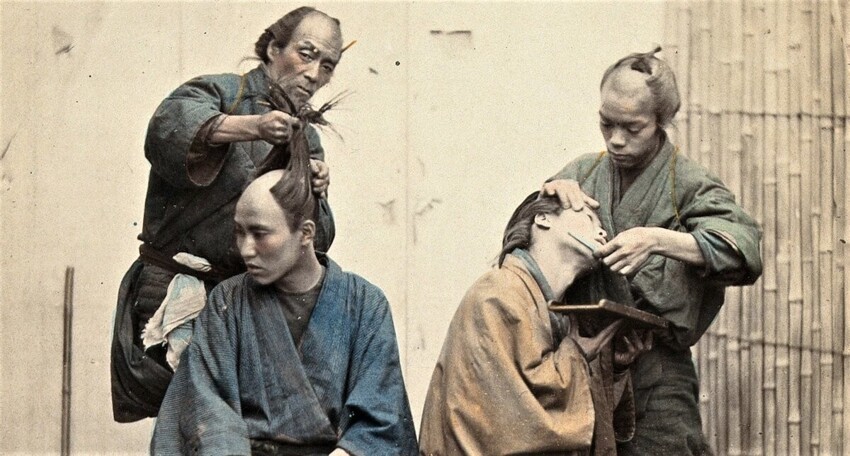
For a man, this is quite a lot of work on his image and to lose such a tuft of hair in a demonstration battle (or during a duel) from samurai was considered a real disgrace.
During the Sengoku period, such a samurai hairstyle was completely entrenched in the provincial daimyo as a status symbol when local warlords often fought wars for control of the Japanese islands. IN this time, samurai became important and prominent figures throughout Japanese society. Only men of high rank and status, such as nobles and samurai, it was allowed to wear a hairstyle with a bunch of chonmage.
Notably, the chonmage hairstyle was intended only for wartime. In peacetime, heads were not shaved, so in in society, the samurai wore such a hairstyle indicatively to warn anyone that he is always ready for a possible battle.
But why did the samurai shave their hair in such a strange way? 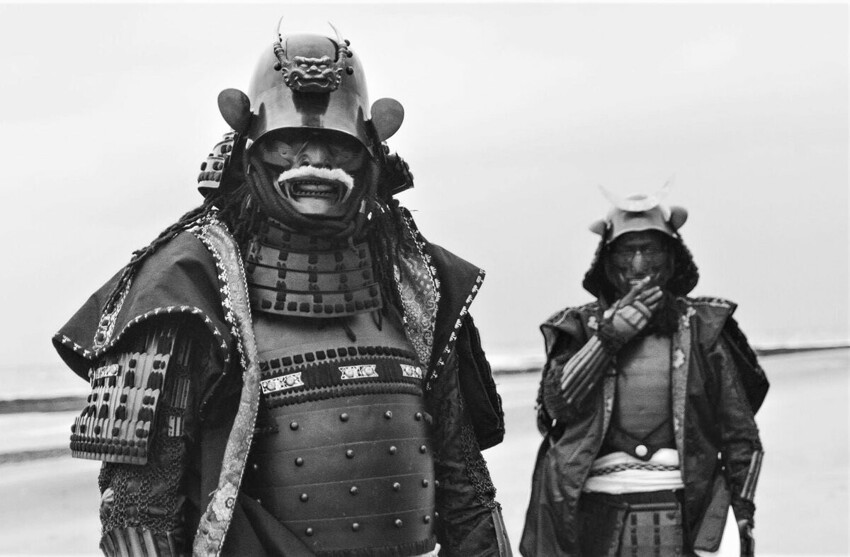
The samurai had to shave their hair off their heads so they could wear the famous samurai kabuto helmet.
Removing hair from the frontal part of the crown, the head remained cool inside the helmet in very hot climates, much slower sweated and didn't itch. Among other things, the beam behind the head served as some kind of "cushioning", for example, during a fall from a horse, so that the helmet does not damage the head much.
This practice of shaving hair was called "sakayaki". AND we repeat that only samurai had the right to wear such a hairstyle. Exactly therefore, ronins (samurai without a master) did not cut their hair, but wore habitual long curls or made simple bunches with tails. 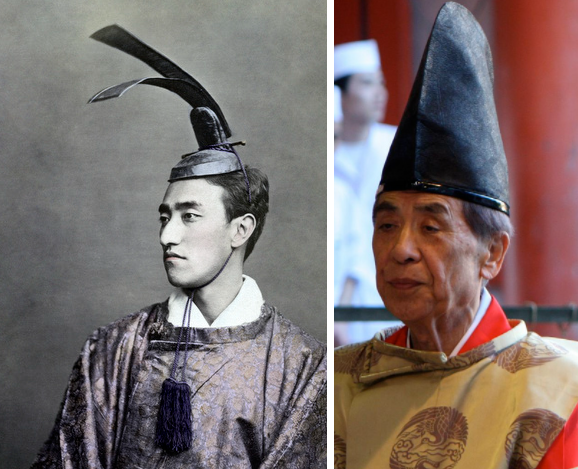
On the left is a kanmuri headdress (worn by Shinto priests), on the right is an eboshi headdress, (worn by the court aristocracy and in some cases by samurai).
By the way, the very first who began to shave off their hair with top of the head were Japanese officials who wore long hats kanmuri and eboshi long before the formation of the samurai as a full-fledged class, so as not to overheat in extreme heat and prevent the appearance lice. Of course, after the Sengoku era, such hats are practically non-existent. were used, with the exception of the rituals and ceremonies of the court nobility and priests. It is from the priests and officials of the samurai in the future and come up with their own types of hairstyles, ideal for their helmets.
The fashion for samurai hairstyles has gone very quickly. 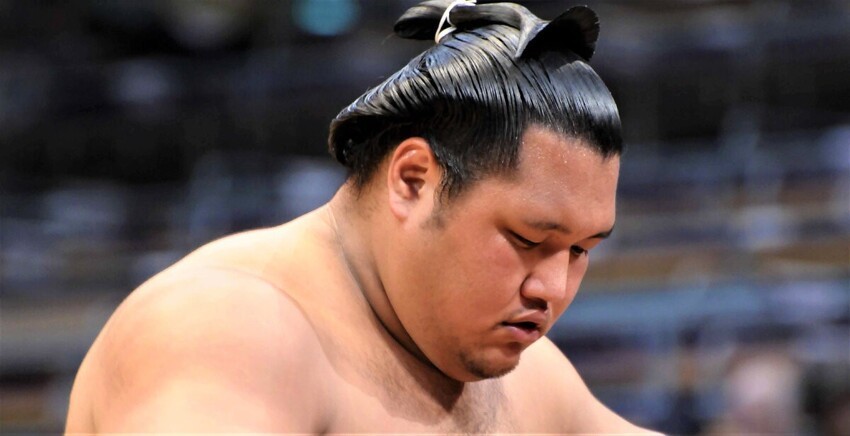
Sakayaki/chonmage hairstyles disappeared when the Japanese imperial the government ordered everyone to have a western-style haircut after Meiji Restoration in 1868. Around the same time, the samurai also disappeared like a social class when Japan opened its gates Western influence and began industrialization by forbidding samurai to wear weapons, and then abandoning their needs. The order to cut hair caused serious backlash, but when the emperor himself cut his hair short, all the samurai followed him.
Today, chonmage bun hairstyles exist only in historical dramas andheads of sumo wrestlers in Japan. Sumo is very ancient and traditional Japanese sport, and one of the traditional its aspects is the chonmage bun hairstyle. Their chonmage is different the fact that it does not require shaving off the upper hair, like the samurai. When a wrestler sumo leaves the sport or retires, then he is indicative cuts his chonmage bun to symbolize his retirement from the sport and traditions associated with it.







